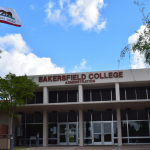Written By: Damon Vangelis, Founder & CEO
Since the start of the COVID-19 pandemic, colleges have quickly sought ways to provide students with virtual support. Virtual resources were essential this spring, and they will provide colleges with needed flexibility to provide virtual support in the years to come.
One institution that is ahead of the curve is Santa Fe College in Gainesville, Florida. Kamia “Mia” Mwango, the Director of Financial Aid, has spent the past five years bringing innovation and automation to her school.
Santa Fe College’s Virtual Approach
From 2015-2020, Mia patiently and prudently assembled the building blocks of technology that would enable the office to go virtual and expand access. In the new normal of COVID-19, her office is now reaping the benefits of the innovations.
Mia recently sat down with Ocelot to detail how she built a virtual office, and the process improvements and increased student satisfaction that came with it. A detailed whitepaper is accessible here for download.
Based on what Santa Fe College and other institutions are doing to support a Virtual Student Support approach, eight (8) components are emerging as cornerstones to a successful effort:
Components of a Virtual Student Service Office
1. Digital lobby that greets students so they can elect how they best like to communicate with our office (Chatbot, Zoom, Call, Email)
By offering students a variety of communication channels, the office signals to students that it is accessible.
2. Artificially Intelligent Chatbot
An AI chatbot is a self-service tool that enables colleges to communicate with students 24/7/365. The chatbot can answer ‘Tier 1.5’ questions—those in both Tier 1 and Tier 2. For scenario-based questions, it helps steer students in the right direction. The chatbot can also support internal staff training.
3. Virtual Meeting Software
Virtual meeting software, such as Zoom, can facilitate remote meetings and “office hours.”
4. Live Chat Software
Combined with an AI Chatbot, Live Chat enables remote staff to handle inquiries that stump the Chatbot or require a more personalized intervention.
5. Online Financial Aid Portal
The online self-service portal is where students can access all of their personal details, see why a flag has been placed on their account, pay bills, etc.
6. Explainer and “How-To” Online Videos
These videos can walk students through processes in an easy “step-by-step” process, and also explain concepts in “simple to understand” ways.
7. Electronic Documents that include electronic signatures
Paper documents require the additional work of keeping copies, scanning, applying wet signatures, etc. Going with electronic documents shortens the time it takes for students to complete paperwork, and reduces the manual record keeping and tracking required of staff.
8. Partnership with the Campus Bookstore for online ordering / delivery
Online ordering at the bookstore can be integrated with the student’s schedule to facilitate easy use of financial aid funds for students.
The wrap up
According to Mia at Santa Fe College, “Our goal is to meet students where they are and they have increasing expectations for what can be done online.” She added, “We provide students with an ‘integrated system.’ There is not a start or finish. There is not a beginning or an end. We offer many ways for students to reach us—regardless of where they might be in their own life or in the process.”
And she shares an important lesson: “You cannot just bring in technology. You need to build around a process. The office needs to adjust its processes in order for the technology to be successful.”















